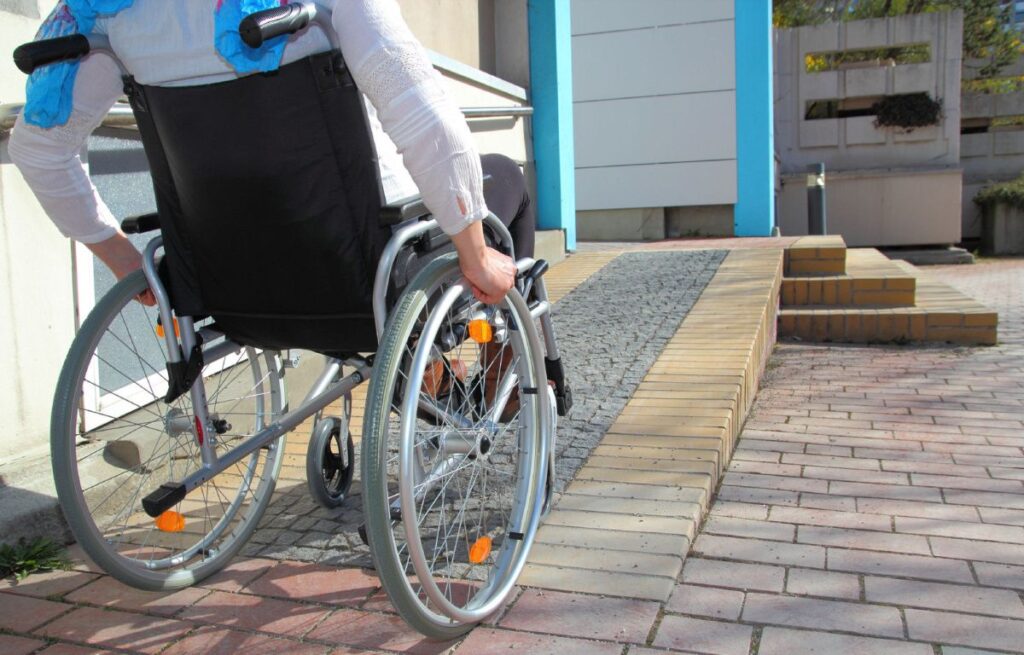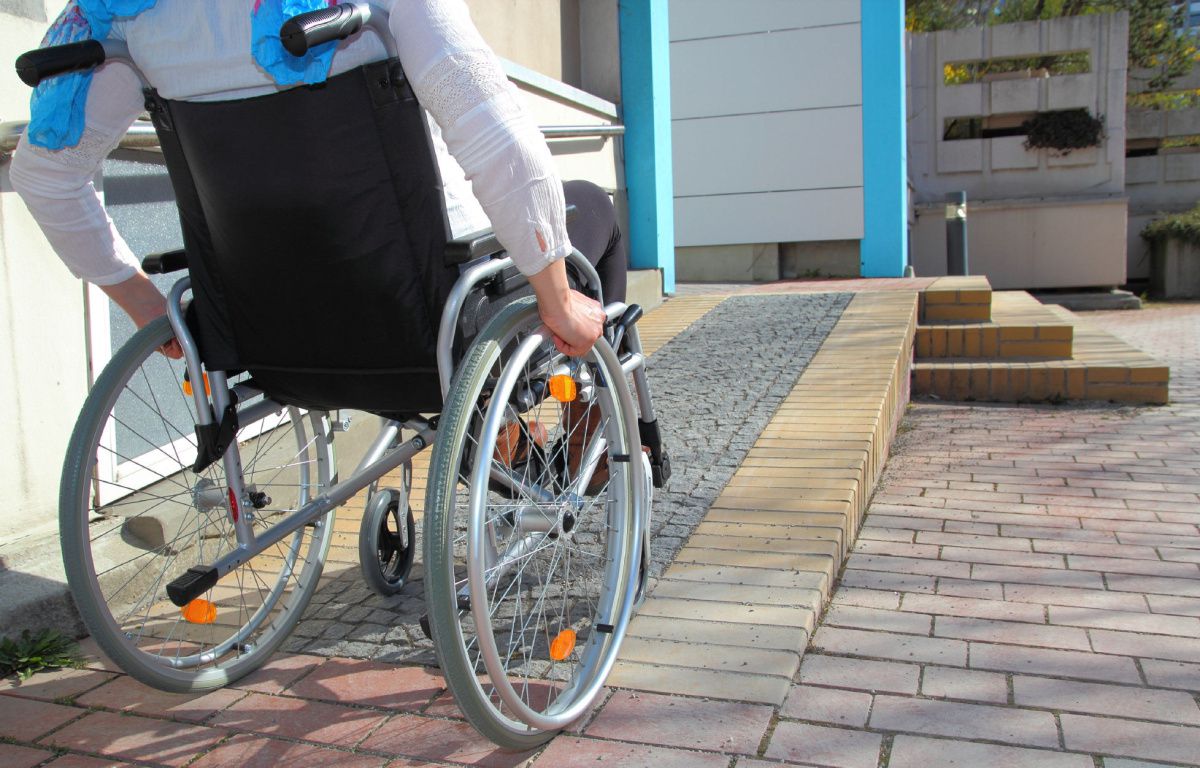Standards/Guidelines for MHA Specific Built Infrastructures & Associated Services for Police Stations, Prisons & Disaster Mitigation Centres under Accessible India Campaign (AIC )

The Building provincial requirements for ramp dimensions to make new buildings more accessible. Image ref: https://www.thestar.com/life/homes/2016/03/26/accessibility-a-priority-in-modern-designs.html
Concept of Model Accessible Built Structures
- Accessible Route/Approach
- Accessible Parking
- Accessible Entrance to Building
- Accessible Reception
- Accessible Corridors and Tactile Flooring
- Accessible Lift
- Staircase with handrails
- Accessible Toilets
- Accessible Drinking Water Facility
- Signage
more details about Concept of Model Accessible Built Structures
Accessibility Standards / Guidelines
- Accessible Routes and Pathways and Ramps
- Alighting – Drop off and Pickup Areas in Foyers
- Parking
- Entrance to the building
- Corridors
- Reception and Lobby Area
- Handrails
- Elevators and Lift
- Toilets
- Staircase
- Doors
- Drinking Water
- Controls and Operating Mechanisms
- Signage
- Emergency Evacuation
- May-I-Help-You Facility
- Canteen and Automated Teller Machine (ATM)
more details Accessibility Standards/Guidelines
Standards for Modern Police Station Buildings
Under the revised norms, Police Station Buildings are graded into the following four categories:
- Modern Police Station Buildings in Metropolitan City like in New Delhi, Kolkata etc.
- Modern Police Station Buildings in Major City like in Lucknow, Allahabad, etc.
- Modern Police Station Buildings in Semi-Urban Area like in Noida & Gurgaon.
- Modern Police Station Buildings in Rural Areas.
more details Standards for Modern Police Station Buildings
Standards for Modern Prison / Jail Buildings
- Concept and design of various categories of Prisons, such as for Male under-trials, male convicts, women’s prison, high security ward, etc. depicting the interrelationship of various spaces, sizes and their layout in the Prison complex.
- Land/area requirement for various categories of prisons
- Capacity of jails with possibilities of future expansion
- Integration of latest technology required for security and ease of administration of jails at the planning and construction stages
- Environment friendly design
- Best practices to address the following issues :
- Overcrowding of inmates
- Security, surveillance, physical separation, confinement in prisons
- Health and Hygiene of inmates in terms of sanitation, drinking water, cooking, dining, etc.
- Residential accommodation for staff in jail complex, not exceeding 20% of the gross land area.
- Road layout is such that it provides single point vehicle access to each building.
- Three wall system required on three sides of the jails and not on the residential complex side.
more details about Standards for Modern Prison / Jail Buildings
Standards for Disaster Mitigation Centres
- Adoption of Universal Design Principles, Facilitation of Accessibility and Access to Assistive Technology
- Physical inaccessibility
- Preparedness and Mitigation Strategies
- Search, Rescue and Evacuation (SRE)
- Access to Relief
- Rehabilitation and Reconstruction (R&R)
- Women and Girls with Disabilities
- Children with Disabilities
- Elderly Persons
- Persons with Psycho-social Disability
- From Risks and Gaps to Inclusion
more details about Standards for Disaster Mitigation Centres
Associated Services with Built-up infrastructures, such as, Police Stations, Prisons, etc.
It is important to ensure universal access to physical environments, transportation, information and communications, including information and communications technologies and systems, and to other facilities and services, both in urban and in rural areas, and ensure all forms of accessibility within the Police institutions.
It is necessary to take all appropriate measures to ensure that reasonable accommodation is provided during the execution of police services, namely the necessary and appropriate modifications and adjustments that do not impose a disproportionate or undue burden, when required in a particular case of police procedure. Consider that the denial of reasonable accommodation is understood as discrimination on the basis of disability.
